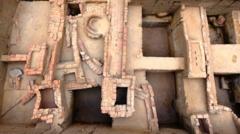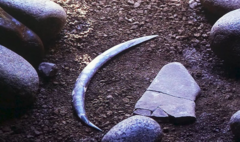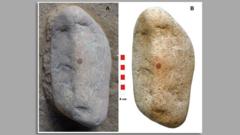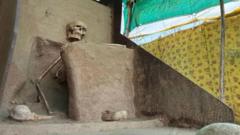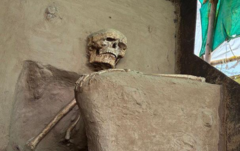Rakhaldas Banerjee's groundbreaking discovery of Mohenjo-daro, a key site of the Indus Valley Civilization, has largely been neglected. His contentious career, marked by brilliance and disputes, illustrates the complications of his legacy within colonial India.
The Overlooked Legacy of Rakhaldas Banerjee: Pioneer of Mohenjo-daro Discovery

The Overlooked Legacy of Rakhaldas Banerjee: Pioneer of Mohenjo-daro Discovery
Rakhaldas Banerjee, the brilliant Indian archaeologist, unearths Mohenjo-daro but is overshadowed by controversy and forgotten by history.
In the early 20th century, an Indian explorer named Rakhaldas Banerjee emerged as a pivotal figure in archaeology, despite fading into relative obscurity today. He is notably recognized for discovering the ancient city of Mohenjo-daro—"mound of the dead men" in Sindhi—situated in what is now Pakistan. This site was a critical part of the Indus Valley Civilization, which flourished from present-day Afghanistan to India during the Bronze Age.
Banerjee, who joined the Archaeological Survey of India (ASI) during British rule, faced many ups and downs throughout his career. He spent considerable time traversing the Indian subcontinent, seeking out historical artifacts, ruins, and inscriptions—a passion that ultimately led him to Mohenjo-daro in 1919. His excavations revealed significant artifacts like seals, coins, and pottery, offering insights into an ancient urban civilization that thrived over 5,000 years ago.
Despite his groundbreaking work, Banerjee's reputation suffered due to controversies surrounding his conduct. Notably, his findings at Mohenjo-daro were not published by the ASI. Allegations arose that John Marshall, then chief of the ASI, appropriated credit for Banerjee's work. Nayanjot Lahiri, a historian, indicated Banerjee's lack of diplomacy and his often confrontational style likely contributed to his obscurity in the historical narrative.
The burgeoning archaeologist faced ongoing disputes during his tenure at the ASI. Mismanagement of funds for excavations raised eyebrows, resulting in disciplinary action. These internal issues further overshadowed his contributions, leading to his eventual request for a transfer to eastern India.
Banerjee's journey, however, took a darker turn when he became embroiled in a scandal involving a missing idol from a Hindu shrine. Though he was cleared of all charges, the incident led to his resignation from the ASI. His personal life faced strains, and despite securing a professorship at Banaras Hindu University, Banerjee passed away in 1930 at the young age of 45.
In retrospective evaluations, scholars acknowledge Banerjee's contributions to archaeology, particularly in relation to the Indus Valley Civilization. Though his legacy remains complicated by controversies and conflicts, his role as a pioneer in uncovering one of the civilization's greatest cities is undeniable and essential to history.

